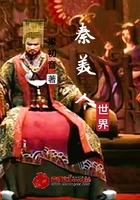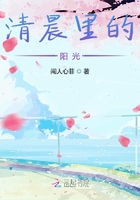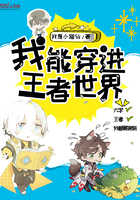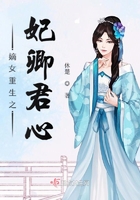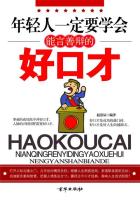Li Zhicao and Yang Tingjun, who were Xu Guangqi"s con- temporaries, were also well-known Catholics. Li Zhicao (1565-1630), a native of Renhe (Hangzhou), in Zhejiang Province, also had another Chinese name, Zhenzhi. He became Juren in 1594 and Jinshi in 1598. In a variety of capacities, he took many of- fices in the imperial court over the years: Gongbu Shusi Liangzhong, Nanjing Taipuci Shaoqing, Hedao Gongbu Langzhong, Guangdong Buzhenshi, Guangluci Shaoqing, etc. In 1611, he was finally baptized into the Church and took the Christian name of Leo. Very early on, Li began to learn the natu- ral sciences from Ricci, such as astronomy, geography and math- ematics. He worked with Ricci to translate books on these sub- jects into Chinese, such as Hun Gai Tong Xian Tu Shuo, Tong Wen Suan Zhi and Huan Rong Jiao Yi. In 1628, when he was well advanced in age, he edited and published the first series of Catholic Books Tian Xue Chu Han. These collected 20 kinds of writings and translations of both science and religion from mis- sionaries and lay people. The books were divided into two parts:iá=D 理 D=(religion) and Qi D 器 D. They were well accepted byall.
Li Zhicao"s understanding of Catholicism was based on hisunderstanding of Confucianism. He made a famous statement:"Dong Hai Xi Hai, Xin Tong Li Tong‘ which means the heart of the matter is the same between East and West. He claimed the knowledge that the Jesuits had was called "Knowledge of Heaven’ which is compatible with Confucian culture: Knowing Tian (Heaven), serving Tian, do not oppose the principles of Liu Jing.
"This is the root of life. Its meaning and principle prevailed. This has not been discussed previously.‘ Li Zhicao"s understanding and interpretation of the part "microscopic and root of life’, which is also in the Catholic Catechism, came from the Confucian self- cultivation and serving one"s neighbors‘ theory. In his book Tianzhu Shiyi Chong Ke Xu, he wrote: "Once you know thetruth, you should put it into practice. Serving Tian and serving neighbors are the same, however, Tian is the source of all mat- ters. The universe has one Lord who is the Lord of all. This is self-evident and is in line with our classical teachings. The core of Ricci"s knowledge is serving Tian, therefore, the concept ofTian is extremely clear in his teachings.‘Yang Tingjun (1557-1627), was a native of Renhe. In 1592, he became Jinshi, and in 1598, he became Jian Cha Yushi. Later, he fell out of favor and returned home. While staying at home teaching, he developed a strong interest in Buddhism. After dis-
cussing Catholicism with Lazaro Cattaneo SJ and Nicholas Trigault SJ, Yang was baptized and took the name of Michael. After his conversion from Buddhism to Catholicism, he became more enthusiastic in religion, which caused criticism from Bud- dhists. In refuting this criticism, he wrote many apologetic and pro-missionary articles that were widely spread, such as Dai Yi Pian and Dai Yi Xu Pian. He thought that the Catholic dogma and Confucian thought were compatible. However, he thought the true Confucian thought had already been lost. The Western thought which Ricci brought to China, that "Heaven is the source of all, and there is only one Lord of Heaven who is the most high [is a] teaching true and clear, and is the same as the teaching ofour Classics.‘
Many Chinese intellectuals were baptized into the Catholic Church. Wang Zheng (1571-1644), a native of Jingyang, Shaanxi, was one such. He began to study Western science from the mis- sionaries and worked with Johan Terrentius SJ (1576-1630) to translate Yuan Xi Qiqi Tu Shuo (Instructions of western Instruments)into Chinese. This was the first book on Mechanics and Machinery available in China. Han Lin, a native of Jiangzhou, Shaanxi, became Juren in 1621. He studied military strategy from Xu Guangqi and, because of Xu"s influence, became a Catholic.
Li Yingshi, Jin Shen, Chen Yujie, Han Yun, Han Xian, Zhang Geng, Qu Shikui, Qu Shigu, Qu Shisi, Li Tianjing, Li Zubai, Zhang Xingyao, Chu Jinan, Ding Yuntai, etc. were other well- known Chinese Catholics.
Those Chinese intellectuals contributed greatly to the Catho- lic mission in China. First of all, they translated Western scien- tific works into Chinese. They were pioneers of the intellectuals who had a world vision. Secondly, they provided opportunities for the Catholic Church to preach the Gospel in China. Because of their engagement, the Catholic Church built many churches in various places. For example, when his father died in 1607, Xu Guangqi went home according to the custom of the day to stay for three years. When he passed by Nanjing, he invited Lazaro Catteneo SJ. to go to Shanghai. He built a church in his home and more than 50 people from his family were baptized, includ- ing children, relatives and servants. Later on, more than 150 people came into the Church. This was the first group of Catho- lics in Shanghai. More and more people were baptized as time went on. By the mid-17th century, the Catholic population reached 3,000. In 1661, the administrator of the local Church, Father Pan Guoguang, informed the Jesuit Superior General that the increase of the Catholic population was 200 annually, whichmade Shanghai the fastest growing Catholic community in the Jiangnan region. The reason why the Catholic Church could grow in China at the end of Ming Dynasty was obvious: not only did the missionaries use a strategy acceptable to both Chinese soci- ety and its culture, but also Chinese Catholic intellectuals made great efforts and show great willingness to work for the Church.
During the first half of the 17th century, the Chinese Catho- lics were mainly located in Shanghai and Jiangnan regions. The population increased from 13,000 in 1627 to 40,000 ten years later. By then, the Catholics were spread through many prov- inces: Jiangxi, Zhejiang, Jiangnan, Shandong, Shaanxi, Shanxi and Zhili. By the year 1661, Catholics were to be found in all 15 provinces except for Yunnan and Guizhou.






